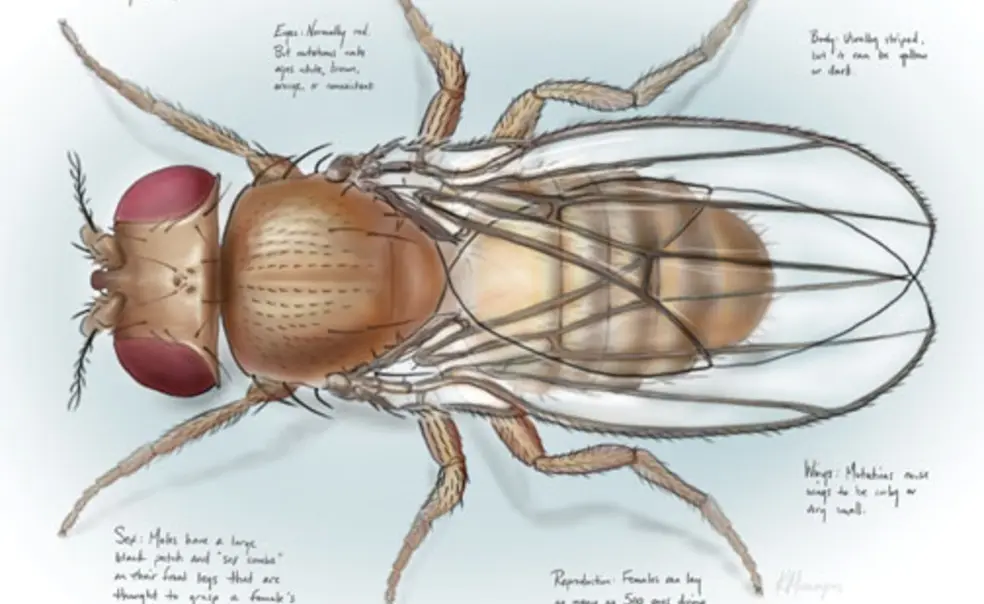Biology: Some Respect, Please, for the Glorious Drosophila
Hate those pesky fruit flies? Think again
If you’re one of those people who runs for a can of Raid after finding a swarm of fruit flies hovering over the ripe bananas in your kitchen, consider this: For more than a century, scientists have come to understand some of the most important processes taking place in the human body by studying these flies.
Ask any fruit-fly researcher why he or she works on this tiny insect — its proper name is Drosophila melanogaster — and the initial answer is likely to be “genetics.” Evolutionary biologist Thomas Hunt Morgan started the tradition by using a mutant strain of the fruit fly to study heredity, showing that genes are linked in a linear arrangement on chromosomes and are responsible for specific hereditary traits. His work was key in establishing the field of genetics — and in elevating Drosophila to laboratory stardom. It earned Morgan the Nobel Prize in 1933.
Scientists have continued to identify flies with mutations just by looking at them — different eye and body colors, curly rather than straight wings, and extra wings. These characteristics then are linked to a gene mutation to figure out the gene’s function.
Princeton’s best known fly researcher, molecular biology professor Eric Wieschaus, received the Nobel Prize in medicine in 1995 for identifying genes that regulate embryonic development. “We basically just did genetics, randomly knocking out genes and looking to see the consequences,” says Wieschaus. He and colleagues screened hundreds of thousands of mutant embryos. The approach, he says, was based on the idea that since there are so many genes (the fruit-fly genome has more than 14,000), it would be useful to understand how they work together in a network.
The genes Wieschaus found to control patterning and organ development in the fruit fly have since been shown to be the same genes that control similar processes in humans. While scientists may take genetics for granted now, in the 1970s it was not yet fully understood that “genetics could be a tool to understand life,” he says.
Scientists have used the flies to study health issues, including those related to aging, Alzheimer’s disease, and diabetes. The fly provides a window into things like circadian rhythm, drug addiction, and Parkinson’s disease. Most of the major signaling pathways essential for human development — the routes through which information flows in cells — that were found to be mutated in cancer first were discovered in the fly.
The flies are cheap to raise (a container with a ripe piece of fruit would do the trick) and multiply quickly: A pair of flies produces more than 200 offspring. It takes only 12 days for a fly to grow from an egg to a 3-mm-long adult, so scientists can experiment quickly. Wieschaus now is working to understand the physical properties of cells: how they move and change shape. His research subject, of course: humble, glorious Drosophila.













No responses yet